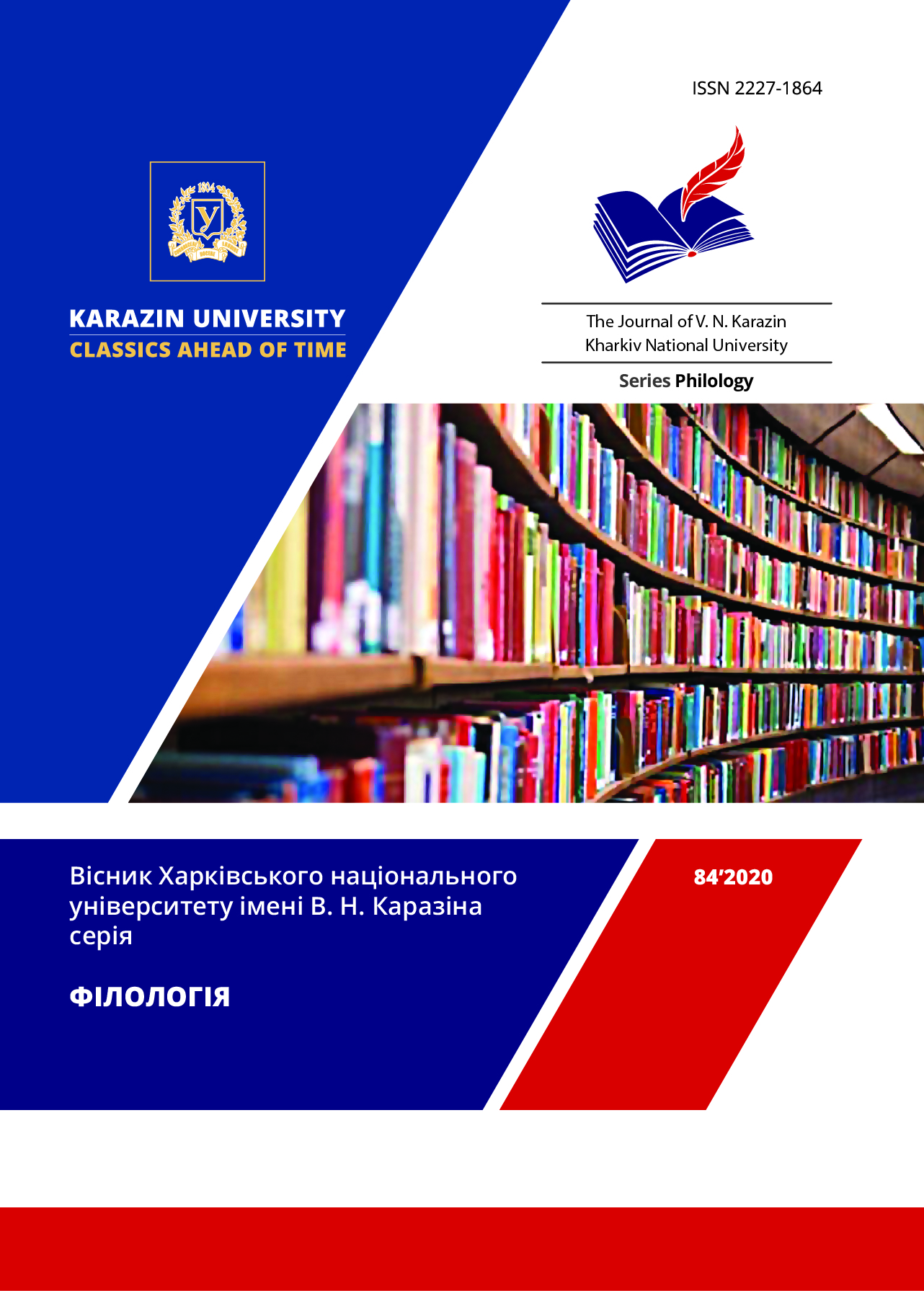Linguocognitive Aspect of Metaphorization in the English Language Terminological Field "Animal Diseases"
Abstract
The article deals with the cognitive mechanisms of metaphorization in veterinary terminology of the English language. This is a case study of the terms-metaphors in the terminological field "animal diseases". In terms of the theory of conceptual metaphor, the main donor zones were identified within the field under consideration. Donor zones are viewed as a source of metaphorical nominations of animal diseases. Metaphorical transformations in the terminological field "animal diseases" are identified as structural, gestalt, and diffuse types. The key categories of metaphorization within terminological field under study were analyzed. Metaphorization demonstrated a significant term formation capabilities, using signs of one particular subject sphere to indicate another. Gestalt type of metaphorization was prevalent in terms of quantity.
It was established that the donor zone HUMAN is the most productive for making terms-metaphors to designate animal diseases since human consciousness is prone to percept an outer world in close association with personal experience of biological and social character.
The conceptual sphere ARTIFACT as a man-made object is the most productive for the English terms of the terminological field "animal diseases". Gestalt metaphorical variation which is based on the use of visual and auditory gestalt is relevant to this donor zone. visual gestures method is the most typical for the formation of metaphor terms.
Conceptual sphere NATURAL FACT as a donor zone for animal diseases terms constitutes an essential part of metaphorical nominations. During the investigation it was found out that constituents of such spheres as flora, natural objects, landscape, rocks and natural products are the motivators of such donor zone as NATURAL FACT. Gestalting is the most productive means when using signs-natural facts. Predominantly, metaphors of this type are based on putting together animal diseases which were not given their names yet with already well-known visual gestalt.
Downloads
References
Lakoff, D., Dzhonson, M. (2008). Metafory, kotorymi my zhivom [Metaphors, We Live by] trans. from English. Ed. Baranova A.N. 2nd ed. Moscow: LKI Publishing House, 256 p. (In Russian).
Selivanova, O. O. (2010). Linhvistychna entsyklopediya [Linguistic Encyclopedia]. Poltava: Dovkillya. 844 p. (In Ukrainian).
Selivanova E. A. Kognitivnaya onomasiologia: [monograph] [Cognitive onomasiology] K. Fitosotsiotsentr, 2000. 248 p.
Orlov F. M. (ed.) Slovar' veterinarnikh klinicheskikh terminov. [Dictionary of veterinary clinical terms]. Moscow: Rosselkhozizdat, 2008. 367 p. (In Russian).
Nedosekov V. V., Polishchuk V. V. Slovnyk epizootolohichnykh terminiv [Dictionary of epizootic terms]. Kyiv: TOV “TSP KOMPRYNT”, 2014. 87 p. (In Ukrainian).
Kittay E. Lehrer A. Semantic field and the structure of metaphor. Studies in language. 1981. № 5. Р. 31–63.
Merriam-webster. Available at: https://www.merriam-webster.com/dictionary/elephantiasis#medicalDictionary.
Merriam-webster. Available at: https://www.merriam-webster.com/medical/clover%20disease.
Rudzka-Ostyn B. Topics in cognitive linguistics. Amsterdam : Benjamins, 1988. 704 p.




